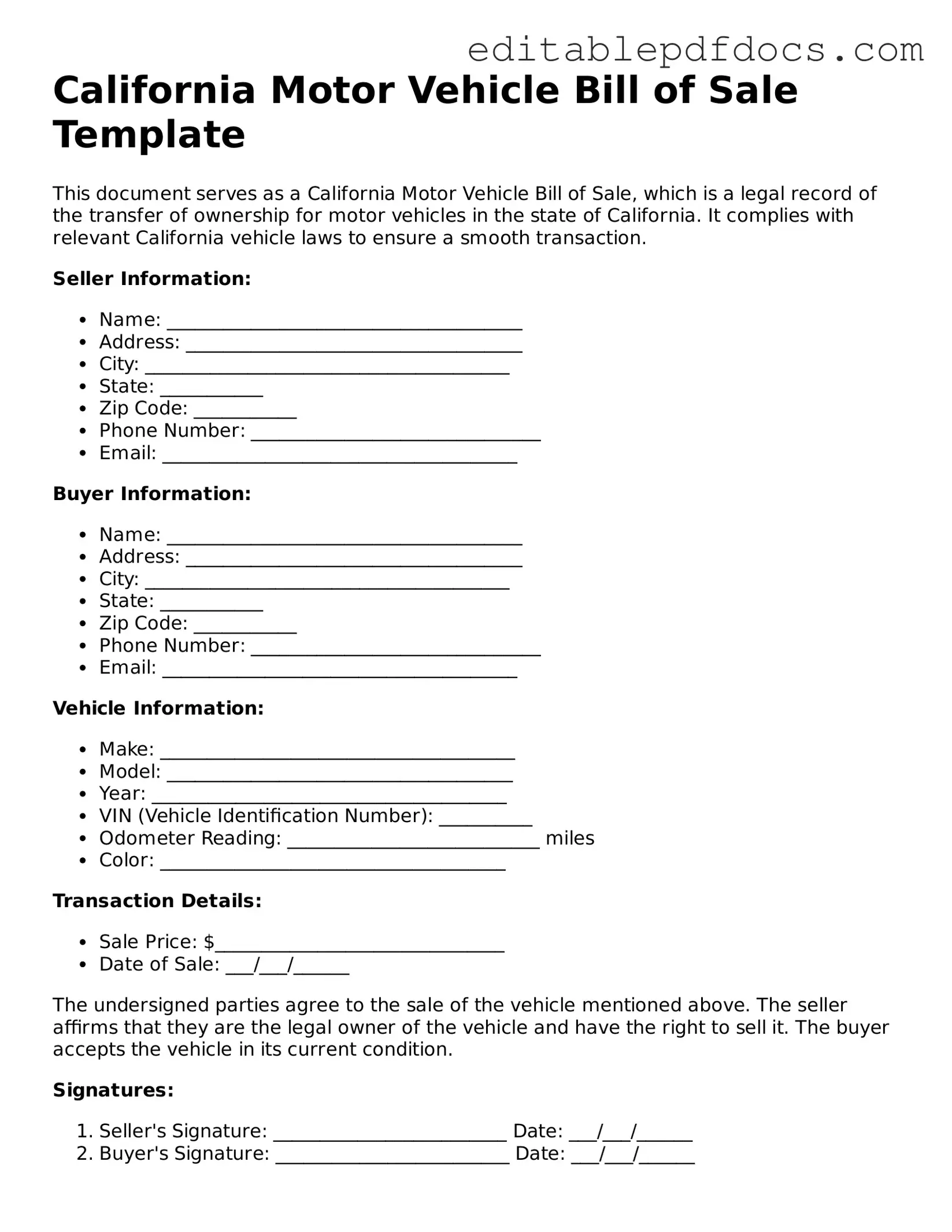Motor Vehicle Bill of Sale Document for California
The California Motor Vehicle Bill of Sale form is a legal document that records the transfer of ownership for a vehicle from one party to another. This form serves as proof of the transaction and includes essential details such as the vehicle's identification number, make, model, and the buyer and seller's information. To ensure a smooth transfer, it is important to fill out the form correctly; you can start by clicking the button below.
Open Editor Now
